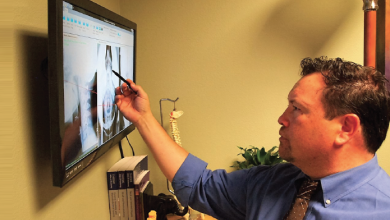Whiplash Facts to Know
As the Rogue Valley continues to be a wonderful place to live, explore, raise families and retire, the roads will continue to get more congested. Unfortunately, with more vehicles on the road the risk of accidents also increase. One of the most common occurrences of motor vehicle accidents (MVA) is Whiplash Associated Disorders. I have seen numbers of patients come in from MVAs that have not received proper care. Because of this, I encourage you to consider filing this article for future reference in case, heaven forbid, you or a loved one finds yourself in the unenviable position of having been in an accident.
The key area of concern in a whiplash injury is the head (cranium) and the neck (cervical spine made up of 7 cervical vertebrae). The craniocervical junction (CCJ) consists of the base of the skull (occiput), atlas (C1) and axis (C2). The head itself (weighs approximately 10-16 lbs. and sits on the first vertebra (C1). C1 rotation around the post of the axis (C2) provides for 50% rotational ability of the neck. It is important to note the unique transition area provides us tremendous mobility and quick response for our ancestral survival and I would argue still important today.
Many Studies of high school and college football players using the Head Impact Telemetry system demonstrated the range of impact accelerations causing CONCUSSION injury is between 60-160g (‘g’ being gravity), with most likely occurrence at 96.1g. Biomechanical studies have demonstrated that as little as 4.5g of neck acceleration can cause mild strain injury to the tissue of the cervical spine. THAT MEANS at less than 7mph soft tissue can be DAMAGED.
The nerve roots from the top 3 cervical vertebras can refer pain into the structures of the cranium and forehead mimicking headaches. Injury to the cervical spine has been shown to cause but not limited to such SYMPTOMS as: headaches, dizziness, loss of balance, nausea, visual and auditory disturbances, reduced cognitive function, neck pain or stiffness, arm pain and paresthesia, temporomandibular dysfunction, and psychological distress. The psychological symptoms that can be associated with whiplash also include depression, anger, fear, anxiety and obsessive-compulsive behaviors.
There are no medical or surgical treatments that have long term effects, many people needlessly suffer and miss work and quality family time because of the pain. The upper cervical doctors of Rogue Valley Chiropractic have studied extensively this specific area of the body and what is necessary to delicately rebalance the system, helping those looking for real solutions. Don’t let somebody guess about your health. If you or a loved one has been in an automobile accident, don’t hesitate to call (541) 779-8338


